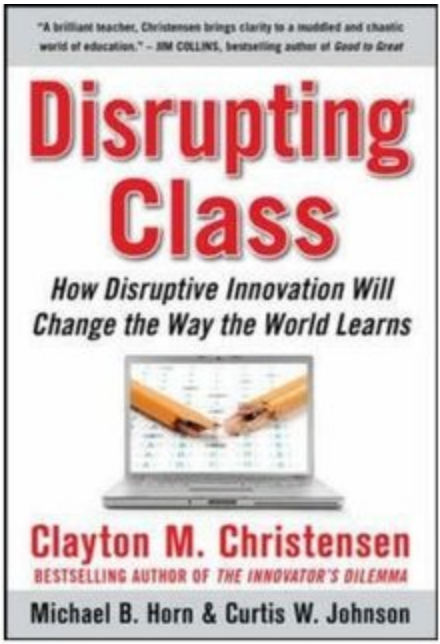Disrupting Class got the numbers wrong but the theory right
by John Watson
Eleven years ago, the book Disrupting Class predicted that in 2019 half of all high school courses would be online.
It’s 2019, the disruption hasn’t happened, and I’m surprised that it’s taken a third of the year for me to see a reference to the failed prediction. But here it is, in Education Week:
…the spread of technology-based innovations in K-12 bears little resemblance to the ambitious claims that outsiders have been making for years. Back in 2008, for example, innovation guru Clayton M. Christensen predicted in his much-hyped book Disrupting Class that half of all high school classes would be online by 2019, radically transforming the nature of public education.
Here we are. For better and for worse, it's just one of many "innovations" that haven't unfolded as forecast.
It’s true that the 50% prediction failed to materialize. But any account of the authors’ failed forecast (by Michael Horn and Curtis Johnson along with Christensen) should also give them credit for also showing why their own projection might fail.
The disruptive innovation theory that Disrupting Class applied to schools predicts that new entrants will start in areas of non-consumption, where incumbents don’t pay much attention to them. In education, this description might apply to a rural high school (the “incumbent”) that doesn’t have the teachers available to offer Advanced Placement or world languages courses in a traditional classroom, but can offer these courses online. The “entrants” in this situation might be a company or a state virtual school offering the online courses. The non-consumption refers to the fact that unless online courses are offered, AP and world languages are not available to students in that school.
In disruptive innovation theory, these new entrants then ride technology innovation to become better than the incumbents and take over the market. That’s the part of the theory that didn’t happen with public schools.
But another part of the theory says that incumbents will be overtaken by the disruptors because the incumbents won’t be able to take full advantage of the new innovations. In a 2008 Ed Week interview, Christensen talked about whether traditional school districts would drive innovation:
“The schools as they are now structured cannot do it,” he said in an interview, referring to adapting successfully to coming computer-based innovations. “Even the best managers in the world, if they were heads of departments in schools and the administrators of schools, could not do it.”
Why did the 50% prediction fail to materialize? Because Disrupting Class incorrectly predicted that the innovators would take over, while correctly predicting that traditional school districts would not innovate so quickly.
We shouldn’t judge the lower-than-predicted rate of adoption of online courses as a failure of public education. Public school districts are complex structures in which buyers and decision-makers are different than “users” (teachers and students), and as public entities they are also subject to public and political pressures. Given the complexity of the system and decision-making, it’s hard to assess what the proper level of innovation should be.
But at a minimum, the next time someone predicts a sea change in the application of technology to public education, it’s worth remembering both the wrong, and the right, aspects of the Disrupting Class prediction.

